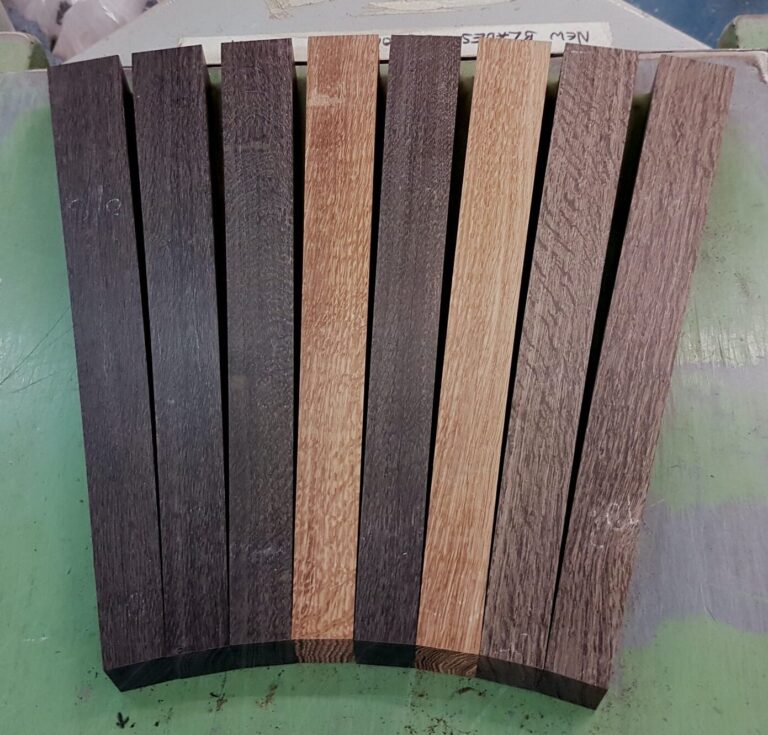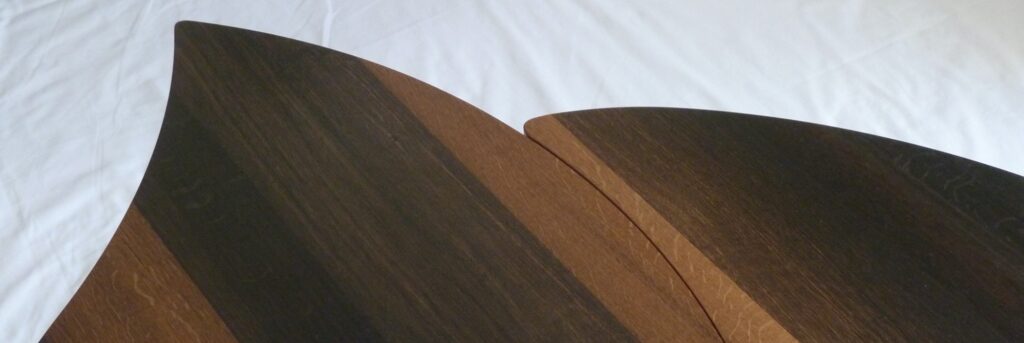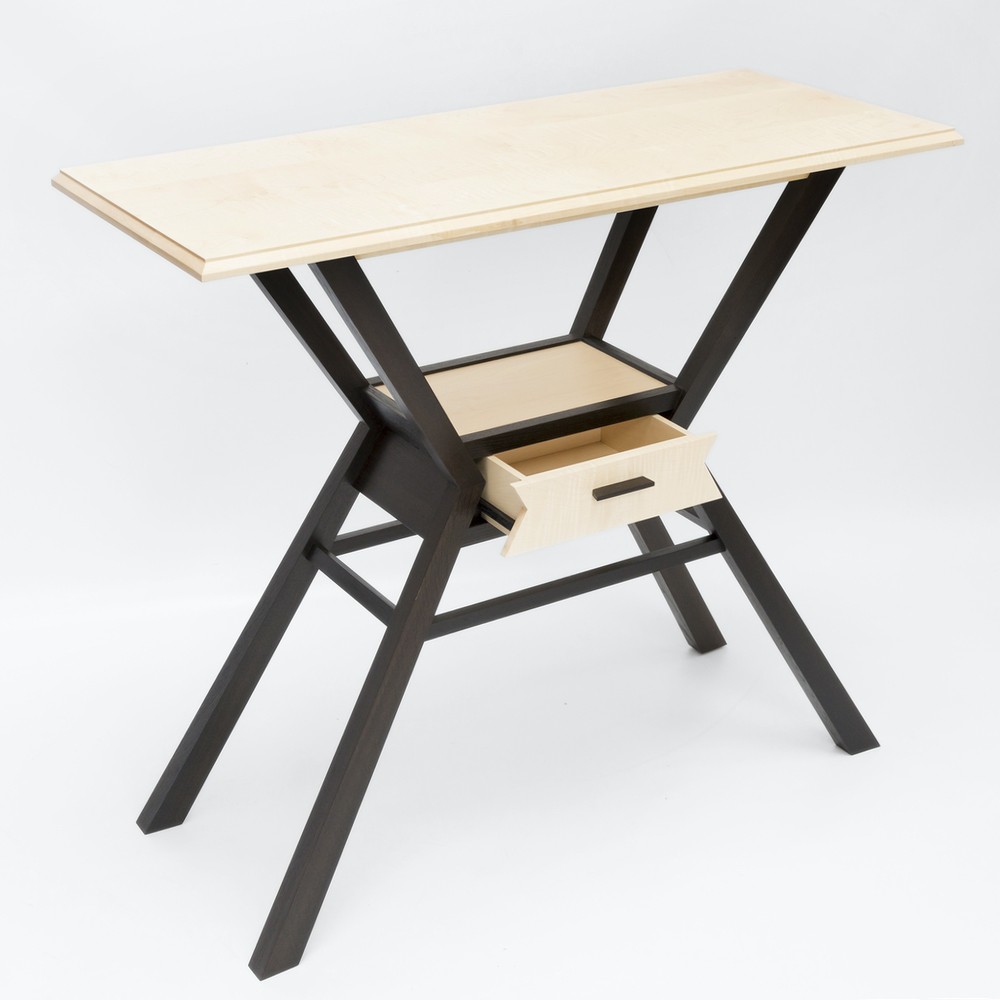
Bog Oak furniture may sound a little unappealing at first, but only until you understand what Bog Oak really is. Then you will want to see, touch and have some bog oak for yourself – it’s irresistible !
What is Bog Oak?

Bog Oak comes from oak trees that have fallen over and lain in bogs, and bog-like conditions such as lakes, river-bottoms and swamps, for thousands of years.
Laying deep under water and deprived of oxygen, the wood starts to fossilise. Minerals and iron in the water react with tannins in the wood, and the wood turns gradually from golden-brown to completely black, becoming much harder than the original oak.
The colour of bog oak generally varies throughout the trunk, with the outer part being a dense black colour as it has had more exposure to the minerals and iron, whilst the inner parts fade from dense black to light brown as the level of exposure reduces.
Where do you find it?
In England, Bog Oak, or Black Oak as it is sometimes called, is found in the East Anglian Fens. The journey of this wonderful wood began when a rise in sea level caused the ancient high forests of the area to flood. Then, when the trees died they fell into the waterlogged silt and were buried.
Examples of Bog Oak found in the Fens have been carbon dated and shown to be an incredible 4000 to 5000+ years old.
These semi-fossilised oak trees are now being discovered, as the Fenland is cultivated and the trees emerge from the peat.
Once uncovered and exposed to the elements, bog oak is extremely fragile and needs to be carefully and expertly extracted from the bog, cut into planks and slowly dried out.

What does Bog Oak look like?

The picture above shows a few planks of bog oak from English Hardwoods sawmill, that have been dried and are waiting to be turned into something to treasure. In this rough-cut state the wood doesn’t look particularly special, but take a look at the picture of the finished Double Leaf coffee table below. Now you can see how the intense dark to light colours of these planks of Bog Oak provide fantastic opportunities for stunning visual impact. The dense blackness of Bog Oak is also particularly attractive when used as a contrast, in combination with other native hardwoods.

Why is it special?
As well as being such a visually appealing wood, Bog Oak is much denser than regular oak and is therefore very good for fine and detailed work.
It is the only hardwood native to England, that is black (or nearly black) and at 4000 – 5000 year old is by far the most ancient hardwood in England.
It has also recently been discovered that Bog Oak is a tone wood with unique sound and it is highly prized for use in hand made percussion, wood wind and stringed musical instruments.
For all these reasons, it is a very special type of wood!
What can be made from Bog Oak?
Pretty much anything that you would make from regular oak, can be made from Bog Oak, although there are a couple of constraints. One is that, as the Bog Oak is very wet and fragile when it comes out of the ground, even when it is treated with extreme care on collection and dried out very slowly, it is rare to find large sections without defect. The other constraint is that it is relatively rare, there is a diminishing supply and as it is difficult and takes a long time to season well, it is fairly expensive!
As it is such an attractive wood and works up very nicely, Bog Oak is very popular for making small items, such as these candlesticks from Adamson and Low.


Bog Oak also makes beautiful furniture of all sizes and types. It can be used as the major component of a piece of furniture, as in my Double Leaf Coffee Table or also very effectively as a contrasting element of the whole, as seen in this Prisma Console Table. Here a lovely piece of light coloured rippled sycamore has been used for the table top and the drawer/shelf underneath, then paired with starkly contrasting legs of dense black Bog Oak to make a very striking piece overall.
At the top end of the scale a very unusual, enormous and definitely one-off piece is the ‘Table for the Nation’. This amazing table is made from a gigantic 13m long trunk of bog oak, which was successfully removed from the Fens and milled and dried to produce useable planks. Read about this incredible undertaking on The Fenland Black Oak Project website. This one definitely goes against my comment on bog oak not generally being available in large sections!

Now would you like your own Bog Oak Furniture?
Having read the story behind this wonderful wood, how could you not want to have some Bog Oak of your own! Please get in touch if you would like to know more about how to commission something (large or small) in Bog Oak.

Iain Butcher
Hello.
The wood looks beautiful, but I’m worried about the long-term effect of utilizing this material will have on peat creation?
Irene Banham
Hi Iain, thanks for your comment and for reading my post. With regard to the effect of using bog oak logs, on peat creation, I believe the impact to be negligible. This is mainly because the number of bog oaks removed annually for commercial use (from the East Anglian Fens at least) is very, very small. The logs that I have come across have all been found on existing farmland and come to the surface as farming work (ploughing, drainage work, etc) is undertaken. The logs need to be removed to enable the farmer to work the field and have not been specifically harvested or dug up from the land for use as a specialist timber. It is the case that there are ongoing discussions around the use of peat bogs and fenland for farmland and there are initiatives underway to restore some farmland to its previous status as fenland (e.g. the Great Fen Project). This and other references point to the importance of peat bogs and fens to the environment and peat bog protection/restoration is an important subject. However, I feel confident that the impact of collecting and using the bog oaks that arise as a by-product of current farming practices has a tiny impact on the loss of peat. I hope this helps to answer your query.
Tom Thorold
I have a large dresser/cabinet that my grandad tells me is made of bog oak, possibly a very rare item as it is massive! Is there anybody you know of who could appraise it for me? I can send a photo of it via email if required
Thanks Tom
Irene Banham
Thanks for the enquiry Tom, I’ve sent you an email in response.